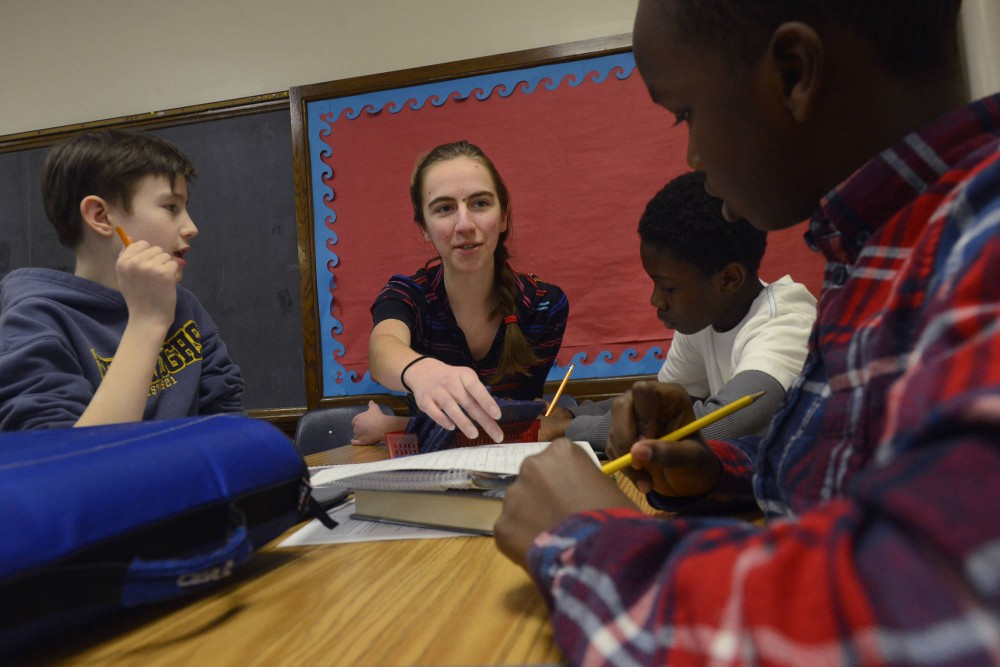University of Minnesota honors students spent some of last week in classrooms at Minneapolis’ Ramsey Middle School to help bolster the school’s elective STEM, or science, technology, engineering and math, program.
The volunteer program is unique because the University students work with middle school students in their classrooms, rather than tutoring after school, said Minnesota Student Association president Joelle Stangler, one of the program’s creators.
“It’s much more engaging,” she said. “You get to build relationships with students.”
About 20 volunteers will spend time at the school working with the students on group assignments. One of the program’s goals is to get students thinking about college — specifically pursuing degrees in the STEM field.
“This is sort of the age where math and science start to get difficult,” Stangler said. “This is the age where it really starts to matter.”
Civil, environmental and geo-engineering professor Catherine French said kids can lose interest in classes like science and math when they reach middle school age, so it’s important for them to be excited about those classes when they are young.
Stangler said while the honors students are there, they’ll place extra emphasis on encouraging girls to take an interest in STEM fields.
Alessia Leibert, a labor marketing analyst for the Department of Employment and Economic Development, said it’s important that women try to fill the gender gap in STEM fields.
Leibert published an article for the state Department of Employment and Economic Development analyzing the benefits of getting a degree in STEM fields. The article said 67 percent of those who graduated with a STEM bachelor’s degree in Minnesota between 2006 and 2012 were male.
Political science and finance sophomore Callie Livengood said the University chose Ramsey Middle School partially because the school and its STEM program are relatively new.
The school was also a good choice for the program because honors students have high ACT scores in STEM subjects, Stangler said, so they are well-equipped to help the students there.
The volunteers will also assist students in regular math and science class group work as needed, Stangler said.
The school’s principal, Paul Marietta, said he thinks having the honors students as models in the classes will likely increase student engagement.
The school tries to apply components of STEM education in all of its classrooms, he said.
“STEM to us represents the learning that is necessary to be effective in the 21st century,” Marietta said.


